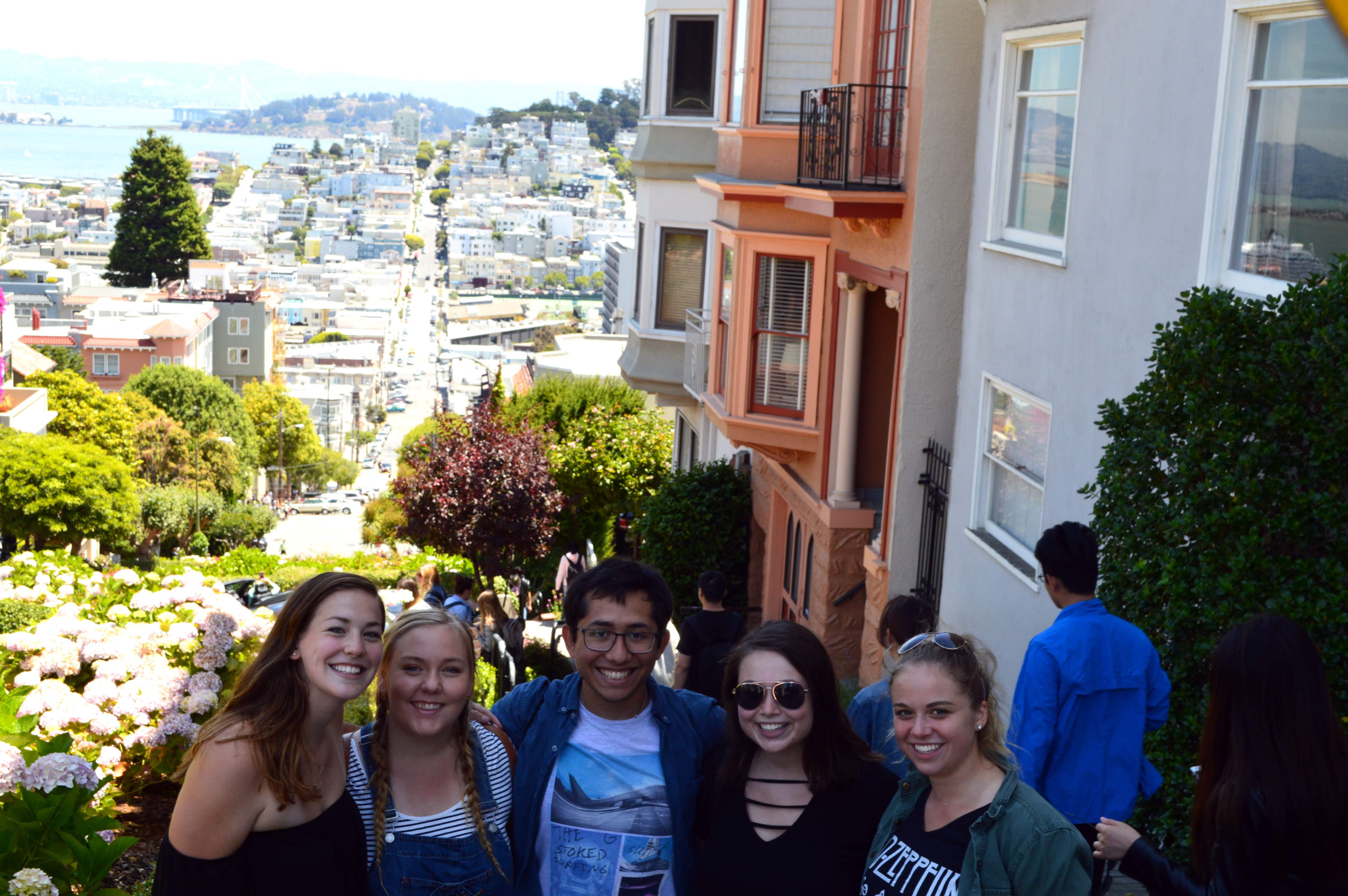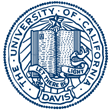
This REU program was funded through NSF PHY-1560482.
Pacific Ocean
The program's first Saturday was unseasonably hot in Davis, so we headed to the ocean. Most of the group made a pleasant but unspectacular two-mile hike to Shell Beach on the Pomo Canyon Trail, passing at first through different types of forest which eventually opened out into ocean views. The beach had climbable rocks and some small tide pools. We later moved on to Goat Rock Beach, with its interesting rock structures and seal nursery.


REU alums and Big Basin Redwoods
In Sunnyvale we met up with two women from the 2006 UC Davis REU Program, who shared some of their experiences and career history. Both completed physics PhDs. One has since held data science jobs at several companies. (In that field the typical length of stay in a job is about two years, although the agglomeration of companies in the Bay Area means that changing jobs doesn't require moving to a new home.) The other worked her way up at Space Systems/Loral, which designs satellites. Not long after we saw her, she also moved to a new position, this time at a startup company. Hearing about their choices along the way sparked debate among the REU group as we drove on to Big Basin Redwoods State Park. There we hiked an 11-mile loop including three waterfalls, large redwoods, and a rock crawling with banana slugs.

Lawrence Livermore National Laboratory
At Lawrence Livermore lab, a few scientists showed us their equipment and explained their projects. Allison Yorita did her postdoctoral work on microelectrode arrays for measuring small signals in the brain. Biomedical engineer Monica Moya designs organs on chips, which can improve drug testing without requiring human trials. Tammy Ma then showed us the National Ignition Facility (NIF), a collection of 192 powerful lasers. During the very brief duration of a shot, its power consumption is about 50 times the normal usage of the entire US. Two of the impressive engineering feats in NIF are getting all 192 laser beams to arrive at the sample at exactly the same time (done by adding extra cable to certain lines as needed, to delay some of the beams by having them traverse extra length) and speeding up the growth time of the laser crystals from several years to 2-3 months. After lunch, four young scientists talked to the group about their career paths and how they wound up at Livermore.
Crocker Cyclotron
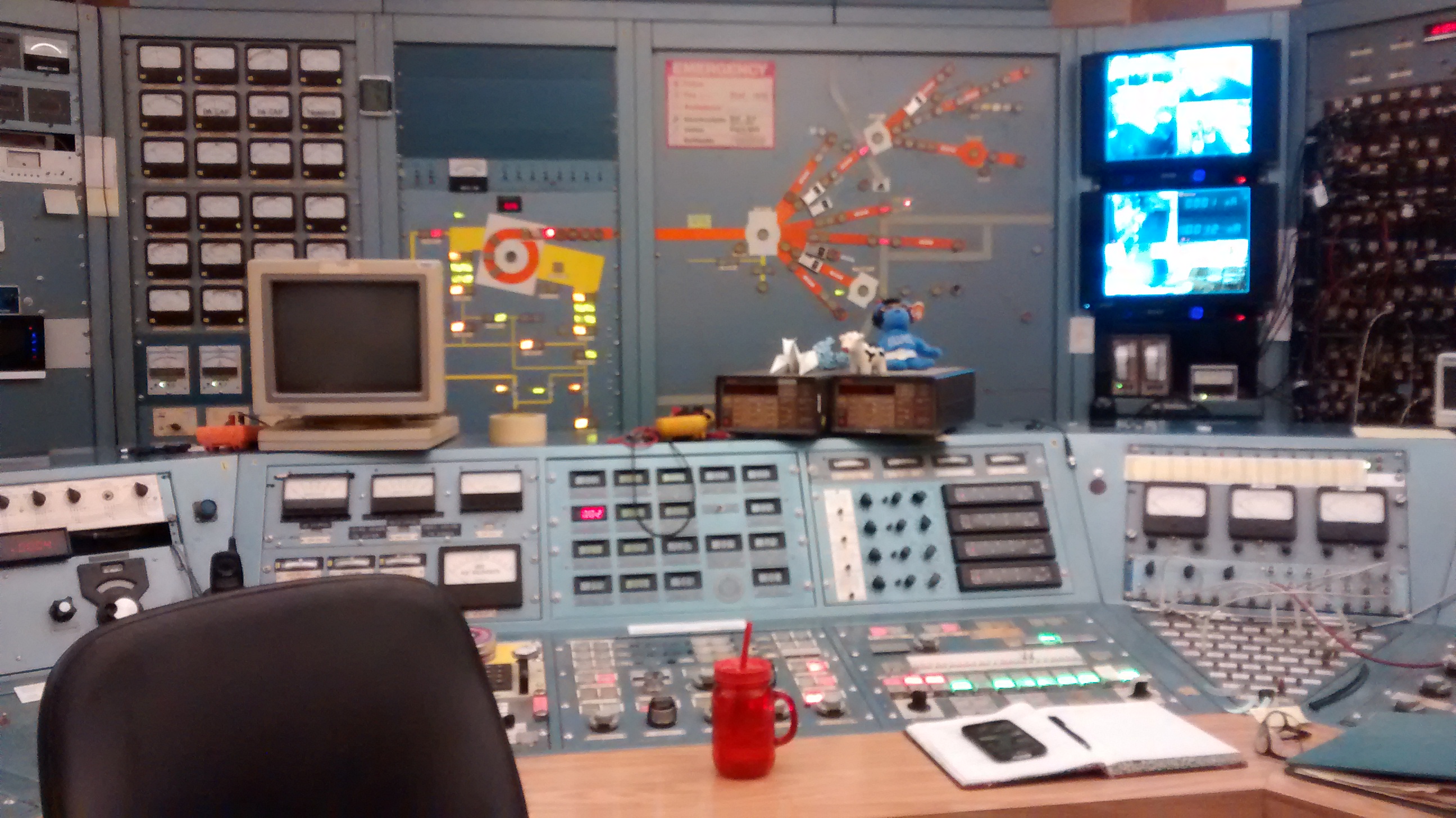
Eric Prebys, a physics professor and the Director of Crocker Laboratory, led a tour through this campus cyclotron. Swag at the end included collimators that had been used for irradiation of eye cancers, each with a hole machined to match the shape of that specific tumor. The machine has recently been out of use for several months because of a series of leaks in the decades-old seals. In the end it had to be opened and all the seals were replaced. Another upgrade now under way is replacing the hulking main control module, with its computer console from the 1960's and physical wire jumpers, by a modern desktop computer and appropriate cards for external communication.
Lassen Volcanic National Park
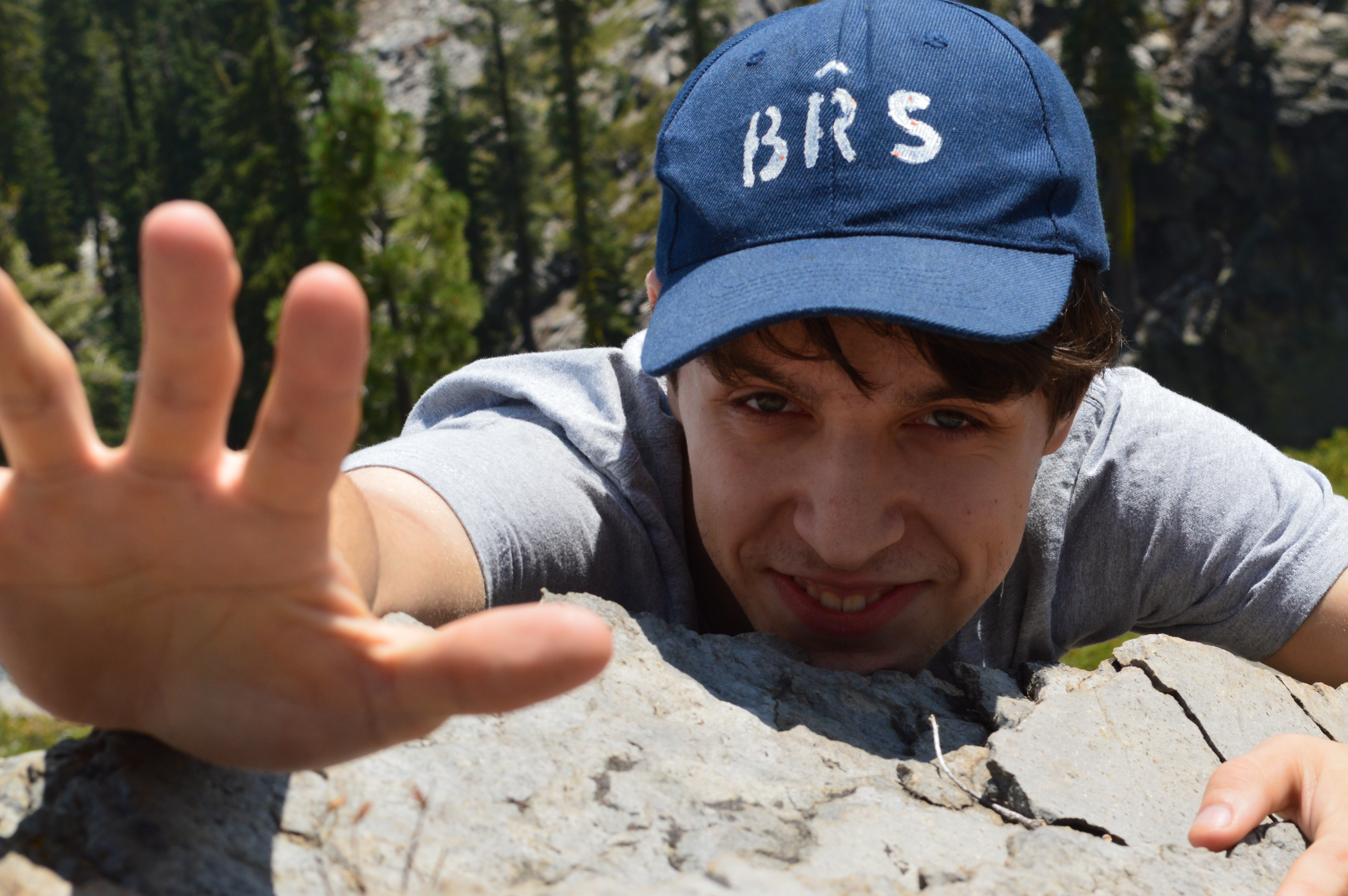
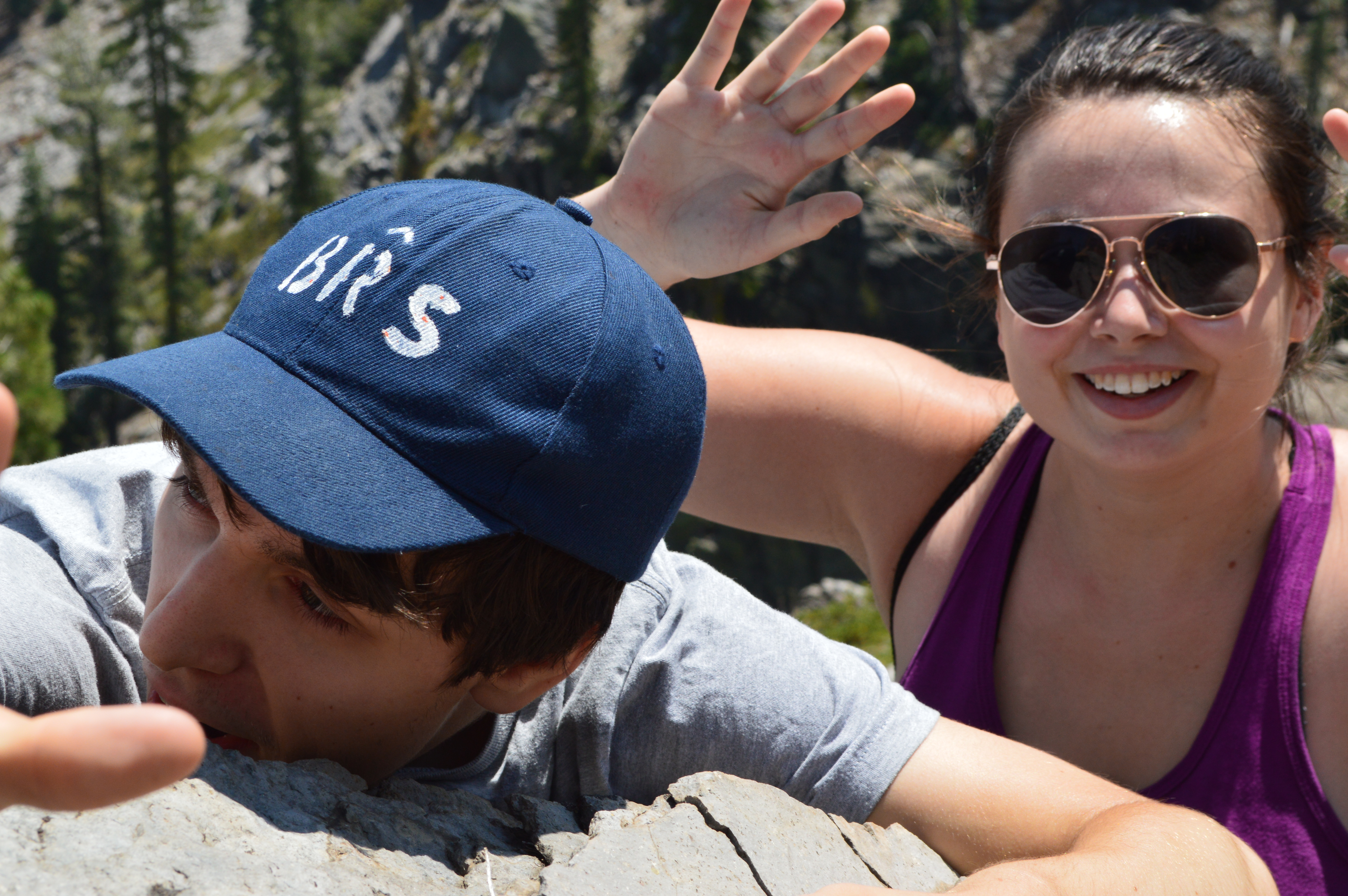
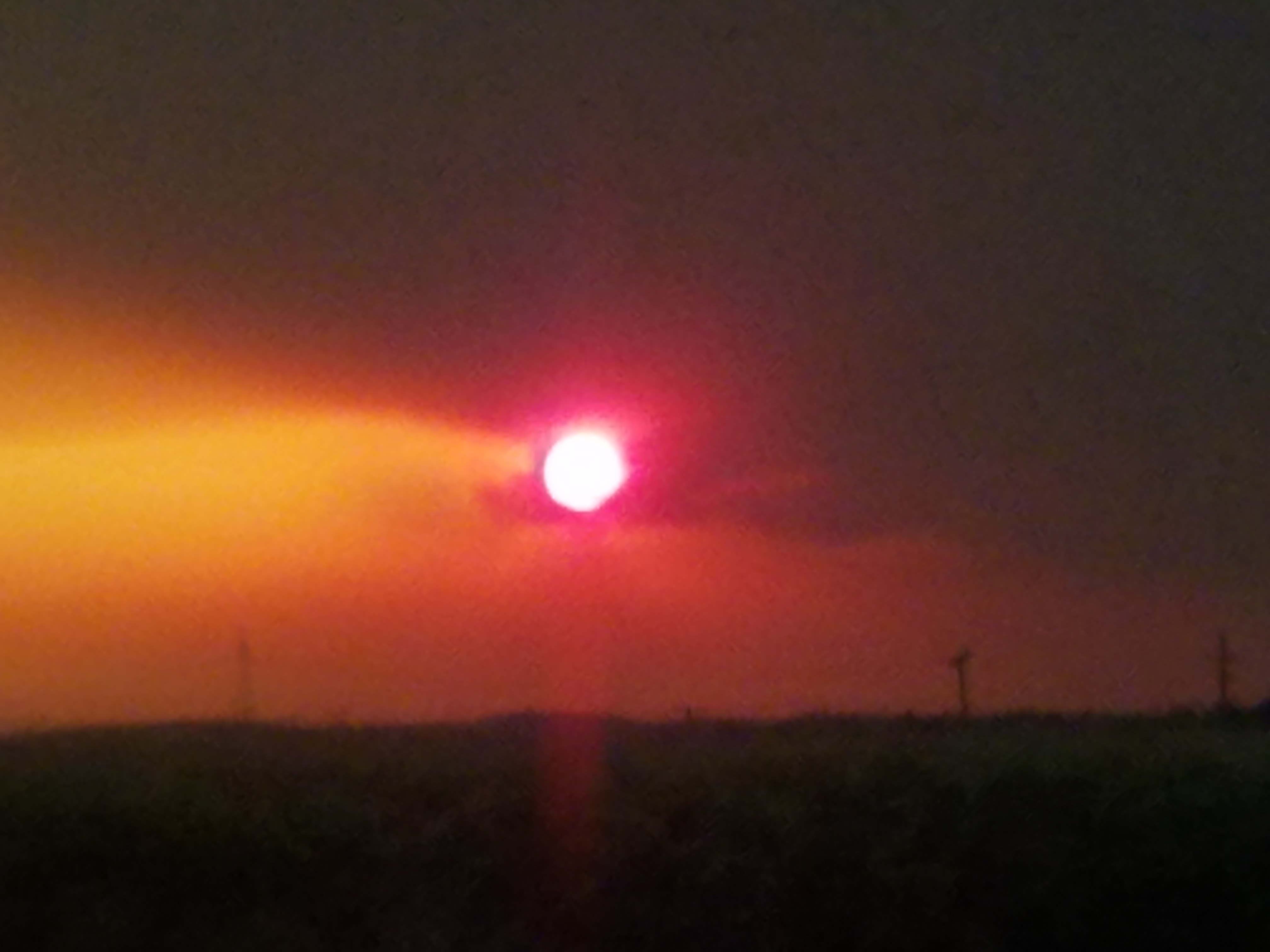
San Francisco
In addition to the trips arranged by the program, some students visited San Francisco one weekend. Here they are on the famously crooked Lombard Street. A car is visible snaking its way through the flowerbeds, slightly in the background and just to the left of the row of students.
